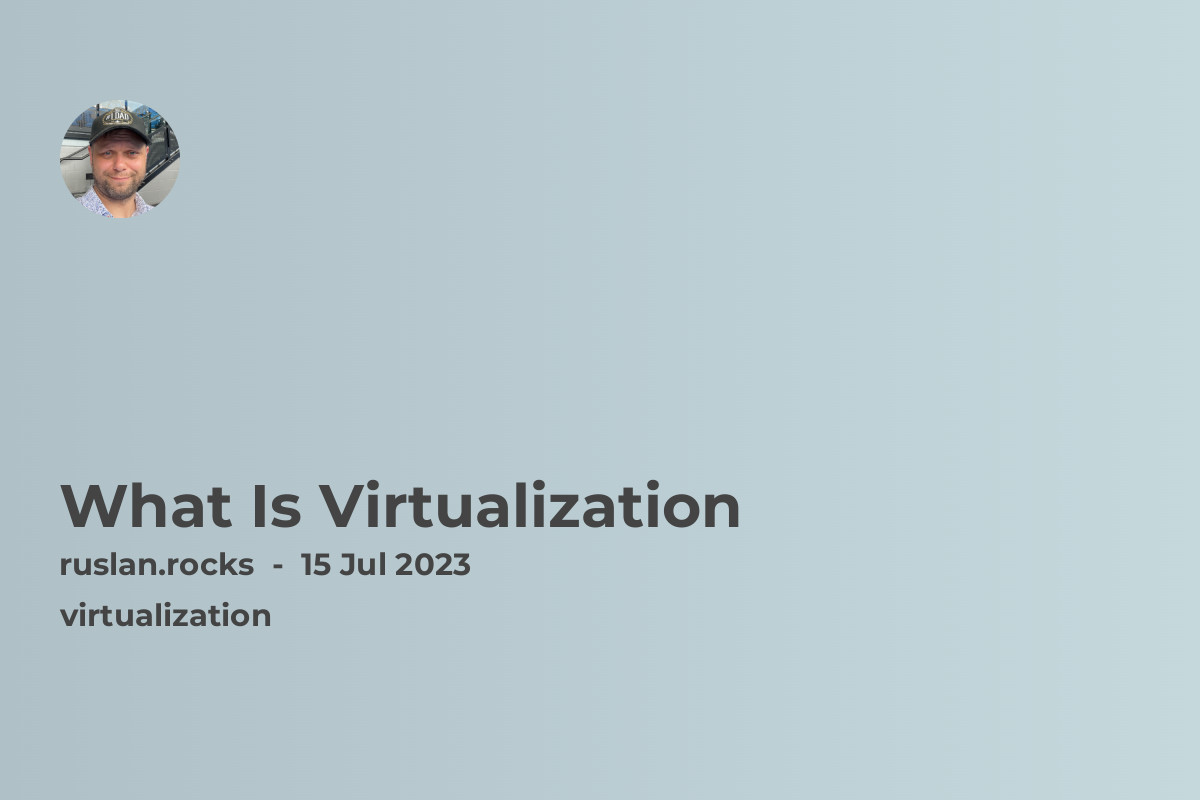
Virtualization is a technology that allows multiple operating systems (OS) or applications to run on a single physical server or computer. It creates virtual instances of the OS or applications, known as virtual machines (VMs), which are isolated from each other and the underlying hardware. This article will explore the concept of virtualization and its benefits in more detail.
Benefits of Virtualization
Virtualization offers numerous benefits for organizations and individuals, including:
-
Resource Optimization: By running multiple virtual machines on a single physical server, organizations can make better use of their hardware resources. This reduces the number of physical servers required, leading to cost savings in terms of hardware, power, and cooling.
-
Improved Scalability: Virtualization allows for easier scalability, as new virtual machines can be quickly deployed and provisioned as needed. This flexibility enables organizations to respond to changing workload demands more efficiently.
-
Enhanced Backup and Disaster Recovery: Virtual machines can be easily backed up and restored, allowing for faster and more reliable disaster recovery. In the event of a hardware failure or system crash, virtual machines can be migrated to another host, minimizing downtime.
-
Increased Security: Virtualization provides enhanced security by isolating each virtual machine from the others. If one virtual machine becomes compromised, it does not affect the others or the underlying hardware. Additionally, virtual machines can be easily patched and updated, bolstering security measures.
-
Simplified Testing and Development: Virtualization simplifies the testing and development process by providing isolated environments for software development, testing, and debugging. This allows developers to quickly create and test various configurations without impacting the production environment.
Types of Virtualization
There are several types of virtualization, each serving different purposes. The most common types include:
-
Server Virtualization: This type of virtualization allows multiple virtual servers to run on a single physical server. Each virtual server operates independently, with its own operating system and applications. Server virtualization is widely used in data centers to reduce hardware costs and improve resource utilization.
-
Desktop Virtualization: Desktop virtualization allows multiple virtual desktops to run on a single physical computer. Each virtual desktop functions as an independent system, with its own operating system and applications. This technology is often used to provide remote access to desktop environments and streamline desktop management.
-
Network Virtualization: Network virtualization creates virtual networks by splitting the available network bandwidth into separate channels. This allows multiple virtual networks to coexist on a single physical network infrastructure, improving network efficiency and flexibility.
-
Storage Virtualization: Storage virtualization abstracts physical storage resources into a virtualized layer, enabling easier management and utilization of storage devices. It simplifies storage provisioning, improves data availability, and enhances data backup and replication processes.
Related Topics
If you're interested in learning more about virtualization, here are some related articles that you may find helpful:
-
Managing Microservices With Docker Swarm And Kubernetes: This article explores the use of Docker Swarm and Kubernetes for managing microservices, which aligns with the concept of virtualization in the context of container orchestration.
-
Introduction To Containerization: This article provides an introduction to containerization, a technology closely related to virtualization that allows for lightweight and isolated runtime environments.
-
Advantages And Disadvantages Of Container Orchestration: This article discusses the benefits and drawbacks of container orchestration, which is an essential component of virtualization strategies.
-
Cloud Computing Future Of Infrastructure: This article delves into cloud computing, which often leverages virtualization technologies to deliver scalable and flexible infrastructure solutions.
-
Devops Practices: This article explores DevOps practices, which often involve the use of virtualization technologies for automating deployment, testing, and other software development processes.
By exploring these related topics, you can gain a deeper understanding of virtualization and its broader implications in the technology landscape.
